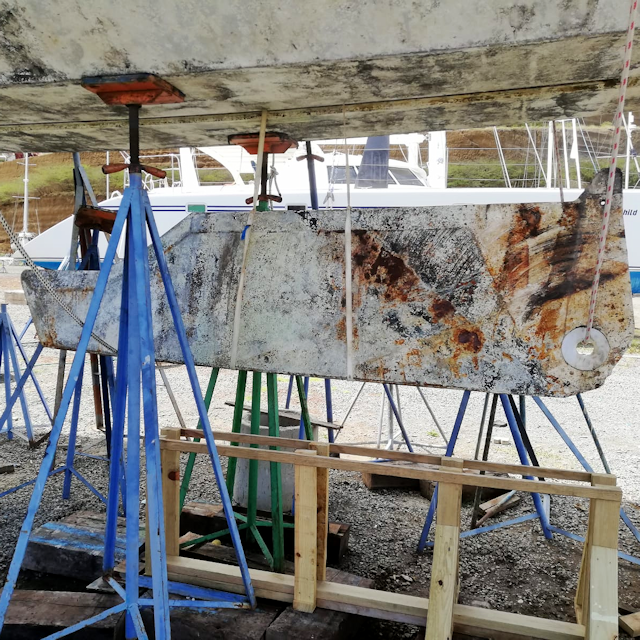SPECIALIST SURVEYS
1. Osmosis and 2. Ultrasonic Thickness Measurements
1. Moisture Readings and Osmosis Evaluation
Osmotic Blistering, also known as "Boat Pox", is a biological process where a liquid molecule (usually water) will pass through a semi-permeable membrane and overtime these molecules will start to gather within any micro-voids in the GRP/FRP lay-up. Within the GRP/FRP lay-up and micro-voids there are various water-soluble components, such as solvents, by-products and uncured elements from the initial laminating procedure. These soluble components will dissolve and break down as a result of a chemical reaction, called "hydrolysis" and will form an acetic solution (acetic/hydrochloric acid and glycol), which gives the “osmotic fluid” a very distinctive vinegary smell and oily texture.
The above is a very brief and short explanation only, but outlines the importance of a thorough hull/deck inspection for the moisture content and possible delamination, to determine the vessels structural integrity and possible future osmotic issues.
Our Survey:
During an osmosis or moisture evaluation survey, MS•YS will determine the moisture content with the latest state of the art Moisture Reader Tramex “V5 Skipper Plus”. The device will be calibrated before every survey at the scene, to insure the most accurate results in various environmental conditions, We are also able to measure in two-depth variations. Additionally, percussion testing, scratch testing and visual inspection will be conducted, as well as PH-testing of osmotic fluid were seen necessary.
The survey will detail the condition and stage of the osmotic process, and give advice and suggestions on the repair procedure.
It is crucial for the success of a repair, that drying process and moisture levels are closely monitored and the recommended practices are correctly followed. Therefore, we offer follow-up visits to ensure the vessel has sufficiently dried out, before any repair attempts are made.
MS•YS also offers this moisture reading service before any repairs are carried out to a hull/deck structure. For example, a damaged hull/keel joint, a stress crack, a faulty fitting or any other issue where water penetration might have affected the laminates or core. IMPORTANT NOTE: there will be inadequate bonding, between the laminates with any epoxy or polyester resin repair if the moisture content around the repair area is too high. A potentially very costly and dangerous issue that can easily be avoided, by proper procedures.
2. Ultrasonic Thickness Measurements (UTM) on Steel & Alloy Hulls
UTM surveys are performed in order to ascertain if the materials, mainly steel or aluminium plating, have lost any of its original thickness due to diminution or other corrosion related defects. From the measurements we take, we determine if the current plate thickness is still within the allowance specified by relevant regulatory society, or if repair works are required.
These thickness readings, can be a deciding factor for a potential buyer during a pre-purchase survey or owners who want to establish the amount of work they will be facing before hauling at a shipyard, or a survey and ultrasonic measurements are required by the insurance company before insuring a vessel or renewing the policy. It is generally advised to check the hull plate thickness every five years. This five year rule will also be taken into account for the recommendations and minimum plate thickness allowance in the survey report, in order to predict any further metal diminution until the next survey.
Thickness readings on the hull of the vessel will be done systematically in a uniformly spaced grid pattern. The survey will also report on the cathodic protection and galvanic corrosion, welds, buckling of plates, through hull pipes and fittings.
MS•YS uses state of the art Multiple Echo equipment, a gauge which creates three error checked back wall echoes in order to determine the correct thickness. With this set-up, accurate through coating measurements can be established, without having to remove any of the protective coating during a thickness survey. Considering the number of "spot" measurements required for a proper full survey, this is huge advantage and less material costs for the owner. However, if the hull is faired with filler or the paint layers are built up old and thick, it might be necessary to remove some top-layers.
The calibration of the UTM-device will be done on site and before every survey, in order to take into account materials velocity, as well as the environmental conditions such as temperature and humidity.
We also offer partial thickness measurements on specific areas or parts of concern, where repairs have been carried out or damages have occured.






